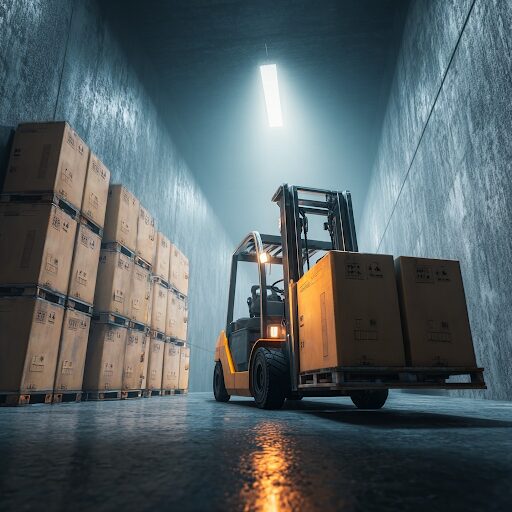Supply-Chain Disruptions: Why End-to-End Visibility Matters More Than Ever

The year 2025 has brought with it a wave of supply chain disruptions that continue to challenge manufacturers, distributors, and logistics providers across the United States. From geopolitical tensions to labor shortages and increasingly unpredictable weather patterns, businesses are under pressure to rethink how they manage and monitor the flow of goods from raw materials to end customers. At the center of this transformation is a critical capability:
The past few years have transformed how companies think about logistics. After the COVID‑19 pandemic exposed vulnerabilities in global supply chains, 2025 arrives with its own set of challenges. Rapid inflation, geopolitical unrest, severe weather and pandemic aftershocks created unique challenges for e‑commerce retailers and third‑party‑logistics (3PL) providers. Despite a more resilient network, new challenges keep emerging, from port congestion to labor shortages and climate‑related disruptions. These disruptions hurt profitability and customer trust, making it essential for U.S. companies to invest in supply‑chain resilience.
The most effective lever for resilience is supply‑chain visibility—the ability to see the location, status and performance of inventory and shipments across the entire network in real time. Visibility enables proactive decision‑making, improves customer service and provides the data needed to build agile, resilient supply chains. Below we explore why disruptions remain a threat in 2025, how visibility mitigates these risks and practical steps for companies seeking a competitive edge.

What’s Causing Supply Chain Disruptions?
Over the last few years, supply chains have been tested in unprecedented ways. The pandemic may have sparked the initial crisis, but the aftershocks are being felt well into 2025. Several key factors continue to disrupt global and domestic logistics:
1. Geopolitical Instability
Ongoing conflicts and trade policy shifts are affecting everything from semiconductor availability to the cost of raw materials. U.S. manufacturers are particularly affected by increased tariffs and sanctions that add complexity and cost.
2. Climate-Driven Delays
Hurricanes, droughts, and heatwaves are impacting port operations and overland transport. The American Southwest, in particular, is seeing increased delays in freight movement due to extreme weather conditions.
3. Labor Shortages
Persistent labor shortages across warehousing, trucking, and manufacturing have slowed down fulfillment times: a recent Deloitte and Manufacturing Institute study found that while U.S. manufacturing may require up to 3.8 million additional workers by 2033, as many as 1.9 million of those roles could remain unfilled if talent gaps aren’t addressed. Nearly two-thirds of manufacturers rank attracting and retaining staff as their top business challenge.
4. Transportation Bottlenecks
Port congestion, reduced rail capacity, and high fuel costs continue to strain logistics systems, increasing lead times and unpredictability across sectors.
Why Supply Chain Visibility Is Essential
In the face of these challenges, supply chain visibility has emerged as a must-have capability. Businesses that can track goods in real-time, anticipate disruptions, and collaborate across partners are outperforming those stuck in outdated, siloed systems.
End-to-End Tracking Enables Better Decisions
End-to-end visibility gives companies the power to monitor everything from suppliers to last-mile delivery. With the rise of real-time GPS and IoT sensors, organizations can detect bottlenecks early and reroute or reprioritize shipments.
According to McKinsey & Company, Supply Chain 4.0, the next generation of digital supply chains—leverages advanced analytics, IoT, robotics, and AI to enable real-time decision-making. Companies implementing these technologies have achieved up to 75% faster order fulfillment, 30% lower operational costs, and up to 20% increase in customer satisfaction.
Data-Driven Resilience
Visibility systems don’t just track goods, they provide actionable data. Real-time dashboards and predictive analytics help supply chain teams identify risks before they become problems, improving agility and responsiveness.
Stronger Customer Trust
When businesses can promise delivery dates and communicate delays proactively, they build customer loyalty. Visibility empowers transparency, which modern customers increasingly demand.
Building a Resilient, Visible Supply Chain
Here’s how forward-thinking U.S. businesses are strengthening their operations through visibility:
1. Investing in Technology
Companies are integrating AI-powered platforms and real-time GPS tracking systems to connect data across procurement, transportation, and warehousing. These tools allow predictive forecasting and automated decision-making.
2. Partnering with Visibility-Focused Providers
Businesses are increasingly aligning with third-party logistics (3PL) providers and fleet managers that offer real-time tracking, API integrations, and data-sharing capabilities. These partnerships are helping organizations unlock faster response times and improved supply chain coordination.
To support these efforts, businesses aiming to improve real-time tracking and coordination across their operations can benefit from using advanced supply chain visibility software, which brings together analytics, automation, and unified data views for smarter decision-making.
Modern visibility solutions are redefining operations in manufacturing, logistics, and retail. With the ability to monitor shipments, inventory levels, and supplier performance in real time from a centralized dashboard, companies can respond more quickly to disruptions, reduce lead times, and improve service levels.
3. Cross-Functional Collaboration
Resilience isn’t just a technology problem, it’s cultural. Businesses are breaking down silos between procurement, IT, logistics, and finance to ensure end-to-end awareness and coordinated responses.
4. Scenario Planning and Simulation
Leading organizations are using digital twins and scenario modeling to test supply chain reactions to disruptions like port closures or raw material shortages. This helps build proactive playbooks, not just reactive crisis plans.
What’s at Stake for Businesses?
Ignoring visibility can be risky and expensive. According to Deloitte’s 2025 Industry Outlook, companies without end-to-end visibility are experiencing 20–30% higher logistics costs, longer fulfillment cycles, and greater loss from spoilage and shrinkage.
Meanwhile, businesses that have embraced visibility are better positioned to:
- Cut lead times and inventory carrying costs
- Improve service level agreements (SLAs)
- Mitigate risk from supply shortages
- Adapt quickly to customer demands
The Visibility Advantage in 2025 and Beyond
2025 is shaping up to be a turning point for supply chains across the globe. As complexity increases, and uncertainty becomes the norm, businesses can no longer afford to rely on outdated tracking systems, fragmented data, and reactive logistics. Companies that embrace real-time supply chain visibility are gaining a decisive edge by increasing agility, anticipating disruption, and making smarter, faster decisions.
Supply chain visibility is the foundation for future-proofing your operations. From improving customer satisfaction to lowering costs and managing risk, its benefits are both immediate and long-term. Businesses that invest in visibility today will not only navigate the current environment with greater confidence, they will also lead the next wave of supply chain innovation.
By prioritizing visibility, collaboration, and resilience, companies can transform disruption into a strategic advantage.
Common Questions About Supply Chain Visibility
What is supply chain visibility?
Supply chain visibility refers to the ability to monitor each stage of the supply chain in real time, from procurement and production to warehousing and final delivery. It allows stakeholders to react quickly to issues, reduce operational risks, and enhance customer satisfaction through transparency and responsiveness.
What tools are used for supply chain visibility?
Common tools include GPS tracking, IoT sensors, warehouse management systems (WMS), transportation management systems (TMS), and AI-driven analytics platforms. These technologies work together to provide unified, real-time data that supports proactive decision-making and operational efficiency.
How does visibility help reduce costs?
Visibility enables better demand forecasting, inventory optimization, and proactive disruption management, all of which reduce carrying costs and emergency logistics expenses. It also minimizes stockouts, improves asset utilization, and helps avoid costly delays or penalties.
What industries benefit most from visibility?
Manufacturing, automotive, retail, pharmaceuticals, and agriculture benefit significantly, but any industry with complex logistics can see ROI from visibility improvements. The more dynamic and global the supply chain, the greater the need for real-time insight and coordination.

Source: Supply-Chain Disruptions: Why End-to-End Visibility Matters More Than Ever




